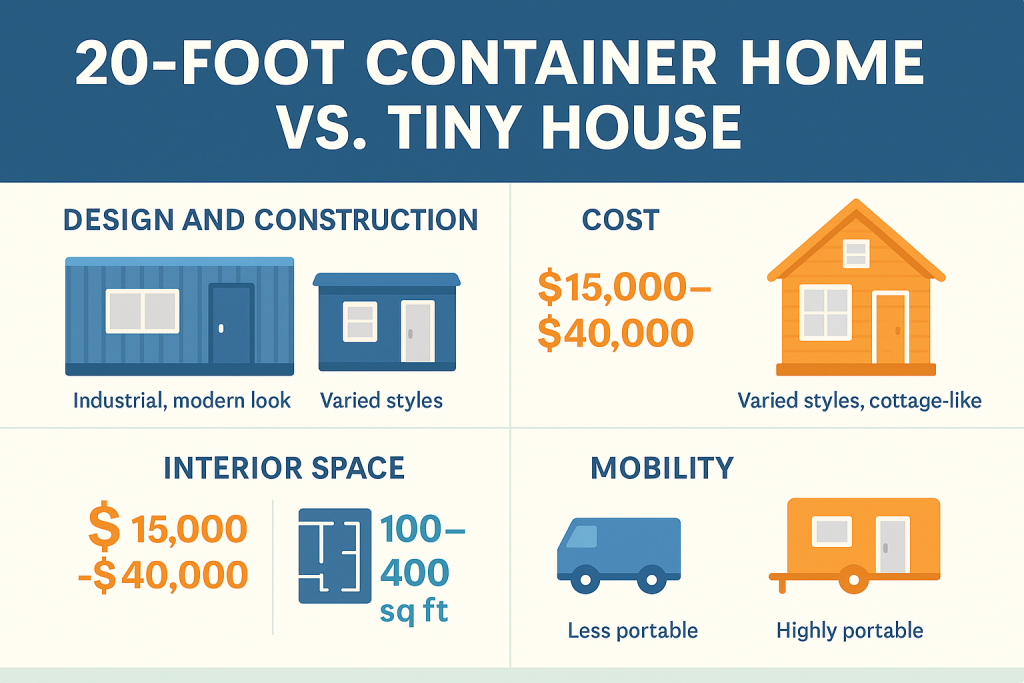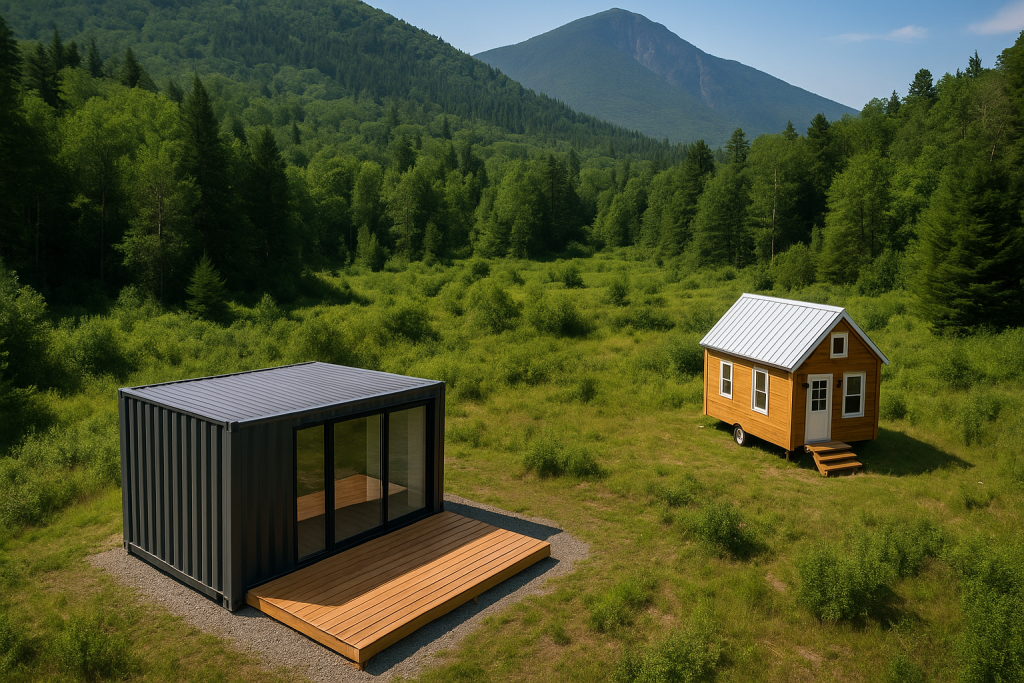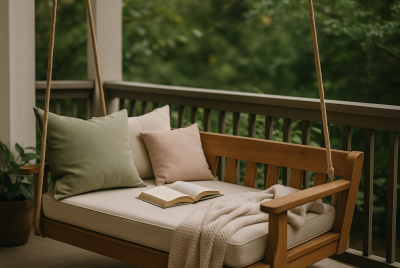20 Foot Container Home vs Tiny House: Which One Fits Your Lifestyle (and Budget)?
We may earn a commission for purchases made using our links. Please see our disclosure to learn more.
Chances are you’ve seen those Pinterest-worthy tiny houses or modern container homes popping up all over Instagram. And at some point, you’ve probably wondered: “Should I invest in a 20-foot container home or go with a classic tiny house?”
It’s a tough call. Both offer affordability, independence, and the excitement of living small, yet each comes with its own set of pros and cons you might not have thought about. In this guide, we’ll dive into the 20 foot container home vs tiny house debate—covering design, price, comfort, flexibility, and even long-term value—so you can confidently decide which path fits your lifestyle best.
Why Downsizing Is Gaining Momentum
Rising housing costs, a growing focus on sustainability, and the appeal of minimalism are encouraging many people to redefine what “home” really means. Choosing a smaller space—whether it’s a container home or a tiny house—goes beyond trimming expenses. It’s about reclaiming freedom, embracing creativity, and shaping a lifestyle that feels authentic. When weighing a 20 foot container home vs tiny house, the real question isn’t just about cost—it’s about which option aligns best with how you want to live.
What Exactly Is a 20 Foot Container Home?
A 20-foot container home starts its life as a standard steel shipping container. It measures about 160 square feet—think of a college dorm room—but can be transformed into a fully functional home.
Features:
- Weather-resistant steel shell
- Stackable and modular design
- Usually 8 feet wide and 8.5 feet tall
- Customizable interiors: insulation, windows, doors, plumbing
Pros:
- Durable and long-lasting
- Easy to transport and set up
- Industrial, modern aesthetic
- Eco-friendly (repurposed materials)
Cons:
- Limited space (only 160 sq. ft.)
- Requires insulation upgrades for extreme climates
- Can feel boxy unless creatively designed

What Is a Tiny House?
A tiny house, on the other hand, is typically built from scratch on a trailer or foundation. Sizes vary, but most range from 150 to 400 sq. ft.
Features:
- Can be custom-built or pre-designed
- Often features lofted sleeping spaces
- Wood or composite construction
- More traditional “home” feel
Pros:
- Flexible floor plans
- Cozy, homey atmosphere
- Easier to get financing than container homes
- Often higher resale value
Cons:
- More expensive than container homes (per square foot)
- Heavier and harder to transport
- Maintenance costs can add up
Cost Breakdown: 20 Foot Container Home vs Tiny House
This is the part that usually grabs attention.
- 20-foot container homes: You can start a DIY build for around $15,000, while fully finished versions from builders often exceed $40,000.
- Tiny houses: Typically range from $40,000 to $90,000, depending on square footage, layout, and custom finishes.
👉 If keeping costs low is your top priority, container homes tend to come out ahead.

Comfort & Livability
Ask yourself: Do I want to live in a stylish steel box or a woodsy cabin on wheels?
- Container homes often feel industrial and modern—great if you love minimalism.
- Tiny houses feel cozier and more traditional—better for families or anyone craving warmth.
Think of it this way: a container home feels like a sleek studio apartment, while a tiny house feels like a charming cabin.
Flexibility & Mobility
- Container home: Better for staying put but can be shipped almost anywhere.
- Tiny house: Built on trailers, they’re more road-trip friendly (but harder to move long distances).
Which One Holds Value Better?
Tiny houses often retain value better than container homes because they’re more widely accepted in real estate markets. Container homes, while trendy, still raise eyebrows with zoning officials and traditional buyers.
Amazon Product Recommendations: Tiny Living Must-Haves
Whether you choose a container or tiny house, the right furniture and gadgets make all the difference. Here are a few smart Amazon finds:
1. Compact Folding Dining Table
- Space-saving design
- Multi-functional: dining, desk, or prep station
2. Portable Propane Stove
- Perfect for off-grid cooking
- Compact and durable
3. Loft Bed With Storage
- Maximizes small vertical spaces
- Cozy sleeping solution
4. Solar Generator Kit
- Off-grid power solution
- Essential for container or tiny living
5. Collapsible Kitchen Set
- Stackable pots, pans, and bowls
- Saves cabinet space

Research-Backed Insights
Studies have shown that downsizing to small homes reduces financial stress and increases life satisfaction (Journal of Environmental Psychology).
Additionally, a 2019 survey by the National Association of Home Builders found that millennials are more open to smaller, more affordable housing options compared to older generations. That explains the surge in demand for container homes and tiny houses in today’s market.
FAQs: 20 Foot Container Home vs Tiny House
1. What’s the more budget-friendly choice: a tiny house or a container home?
A 20-foot container home is generally cheaper upfront, but tiny houses may hold resale value better.
2. Do container homes last longer than tiny houses?
Yes, shipping containers are built to withstand harsh conditions, but proper insulation and maintenance are crucial.
3. Can I move my container home easily?
They’re easier to ship long distances than tiny houses, but you’ll likely need professional help.
4. Are container homes legal everywhere?
Not always—zoning and building codes vary. Tiny houses face similar challenges but may have more community support.
5. Which option is more eco-friendly?
Both can be eco-friendly. Container homes recycle steel, while tiny houses use fewer building materials overall.
Looking for Other Alternatives?
If you’re exploring unconventional housing, don’t miss out on these treehouse living ideas for even more inspiration.
Conclusion
When it comes to 20 foot container home vs tiny house, the right choice depends on your priorities. If you want affordability and modern vibes, a container home might be perfect. If you crave coziness, flexibility, and long-term value, a tiny house may be the better path.
Either way, both options prove that “home” isn’t about size—it’s about freedom, creativity, and living on your own terms.




